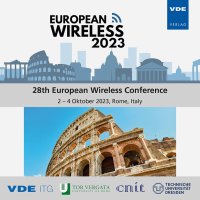A Comparative Study of Linear Block Channel Codes in Macroscale Molecular Communications
Conference: European Wireless 2023 - 28th European Wireless Conference
10/02/2023 - 10/04/2023 at Rome, Italy
Proceedings: European Wireless 2023
Pages: 5Language: englishTyp: PDF
Authors:
Hofmann, Pit; Cabrera, Juan A. (Deutsche Telekom Chair of Communication Networks, Technische Universität Dresden, Germany)
Bassoli, Riccardo (Deutsche Telekom Chair of Communication Networks, Technische Universität Dresden, Germany & Centre for Tactile Internet with Human-in-the-Loop (CeTI), Dresden, Germany & Quantum Communication Networks (QCNets) Research Group, Technische Universität Dresden, Germany)
Fitzek, Frank H. P. (Deutsche Telekom Chair of Communication Networks, Technische Universität Dresden, Germany & Centre for Tactile Internet with Human-in-the-Loop (CeTI), Dresden, Germany)
Abstract:
Molecular communication (MC) has emerged as a promising paradigm for enabling communication between nanoscale devices and macroscopic systems. In this context, channel coding plays a crucial role in mitigating the adverse effects of noise, and inter-symbol interference (ISI) in MC channels. This paper presents a comprehensive comparative study of various channel coding schemes (linear block codes, f.e. Hamming codes, Reed-Solomon (RS) codes, and low-density parity-check (LDPC) codes) in the macroscale MC domain. The objective is to analyze and evaluate the performance of different coding techniques in terms of the data rate, the code rate, and the bit error ratio (BER) on the error pattern of a macroscale MC testbed. In this paper, we show an up to 50% gain in the BER of a drift-assisted macroscale MC coded system compared to the uncoded case. The findings provide valuable insights into the benefits and limitations of different channel coding schemes. Thereby, the results demonstrate the potential of channel coding schemes to enhance the performance and reliability of macroscale MC networks, paving the way for the integration into future nanoscale communication applications.


